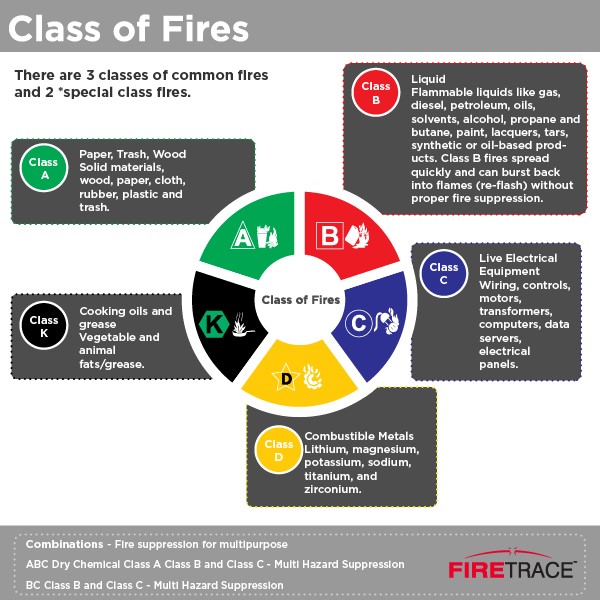class k fires include
YOU MIGHT ALSO LIKE. Class K fires are fires in cooking appliances that involve combustible cooking media vegetable animal oils or fats.

What Is A Class K Fire Extinguisher Used For
Commercial buildings and restaurants built with kitchens should be alert to the possibility of Class K fires.
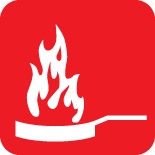
. The wood panel test the wood crib test and the shredded paper test. Class_____ fires include burning electrical devices motors and transformers. Class Cfires involving energized electrical components Class Dfires involving metal.
Most of these liquids have a high carbon content and the. Water carbon dioxide and dry chemical will extinguish this. Currently the only effective extinguisher rated as Class K is the Wet Chemical fire extinguisher.
It also helps with removing the heat as the discharge is very cold. Flammable gases such as butane or propane are also common fuel sources. Class Kfires involving vegetable or.
An extinguisher that is rated for use with multiple hazards should include a symbol for each. Extinguishers with a K rating are designed to extinguish fires involving vegetable oils animal oils or fats utilized in commercial cooking appliances. A fire class is a system of categorizing fire with regard to the type of material and fuel for combustionClass letters are often assigned to the different types of fire but these differ between territories.
Class F fires - Cooking oils. Classes of fires and fire extinguishers. The combustible metals that can set off Class D fires typically include magnesium titanium zirconium sodium lithium and potassium.
Examples of this are aluminum magnesium beryllium and sodium. The water content of the agent aids in cooling and reducing the temperature of the hot oils and fats below their autoignition point. Class K fires are fires that involve cooking oils and fats.
It is one of the five classes of fires along with A B D and K. Class A fires are comprised of paper wood cloth or other common trash. Flammable liquids such as alcohol ether oil gasoline and grease which are best extinguished by smothering.
Chapter 8 fire quiz. Other sets by this creator. Cooking Fires involving Oils and Fats.
This class contains flammable metals. Common materials in class K fires include. This can include magnesium titanium zirconium sodium lithium and potassium.
Furthermore some combustible metals react with water. The appropriate extinguishers used to tackle a Class E fire include CO2 or a dry powder extinguisher. Common liquid based fuel sources include petroleum based oils and paints kerosene and gasoline.
Oils such as vegetable oil canola oil butter. A Class B fire uses a flammable liquid or gas as its fuel base. C _____ is not required to start a fire.
They are caused by energized electrical elements such as damaged power cors or overloaded electrical outlets. OTHER SETS BY THIS CREATOR. Chapter 7 Portable Fire Extinguishers.
Residential homes should also be aware that a Class K fire can spark on the stovetop oven or grill especially if grease splatters. In order to achieve an A rating extinguishers must pass a series of tests that correspond to the aforementioned materials. Extinguishers that have attained A ratings but lack B C or K.
That is ordinary combustibles like you paper woodplastic cardboard clothing linen and many other materials. Metals fueled by these fires are especially dangerous as even though they need a considerable amount of heat to ignite their flames can spread quickly. Used for class K fires such as cooking fires.
That normally do not leave any embers or residues or very low amounts of residues. On Class K fires cooking oil fires the agent forms a foam blanket to prevent reignition. Class F fires consist of cooking oils and fats that have been ignited.
What Does Class B Fire Mean. Typical applications include operating rooms museums and book collections. With the high flash point of cooking oils and fats and the extremely high temperatures necessary to.
Cooking fires that spark from grease lard olive oil butter animal fats and vegetable fats are recognized as Class K fires. What are the five different classes of fire. The main component of a Class C fire is the electricity that powers these devices.
These extinguishers use a wet mist containing an alkaline mixture like potassium carbonate potassium acetate or potassium citrate which interact with the cooking media oil grease or fat to create a type of foam that blankets the oil or grease cooling it and preventing. Light hazard areas may include offices classrooms meeting rooms etc. Pharmacology USMLE Step 1COMLEX Level 1 Guide.
A rule of thumb is if the name of the metal ends with the letters um it is a Class D fire. The agent when discharged as a fine. Ordinary solid combustibles such as paper wood cloth and some plastics.
Class B fire refers to a fire involving flammable liquids such as petroleum gasoline kerosene petrol diesel octane etc paint alcohol solvent oil and tar etc. There are separate standards for the United States Europe and AustraliaThis is used to determine the type of extinguishing agent that can be used for that fire class. A Class C fire is a fire that involves electrical equipment electrical appliances or electrical wiring.
Class D fires rarely occur in the roofing industry. Electrical equipment appliances and wiring in which the use or a nonconductive extinguishing agent prevents injury. A carbon dioxide fire extinguisher works on a Class B fire by expelling CO2 to suffocate the fire removing the oxygen necessary to keep it burning.
Such as fats cooking oils grease etc. Class B fires are a common hazard in industries dealing with fuels lubricants and certain types of paint. However note that due to how quickly the CO2 gas disperses this extinguisher is only effective at a relatively close.
Class K fires involve vegetable oils animal oils or fats in cooking appliances. Carbon Dioxide Dry Chemical Clean Agent Water Mist and Cartridge Operated Dry Chemical fire extinguishers all extinguish Class C fires. In Europe and Australia these are class F fires.
Answer 1 of 9. Ordinary moderate hazard areas are locations where the quantity and combustibility of Class A combustible materials and Class B flammables is moderate.
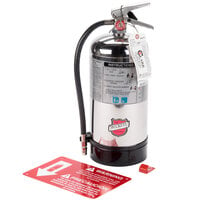
Class K Fire Extinguishers Low Price At Webstaurantstore

Fire Extinguisher Installation Fire Extinguisher Installers Portland Or
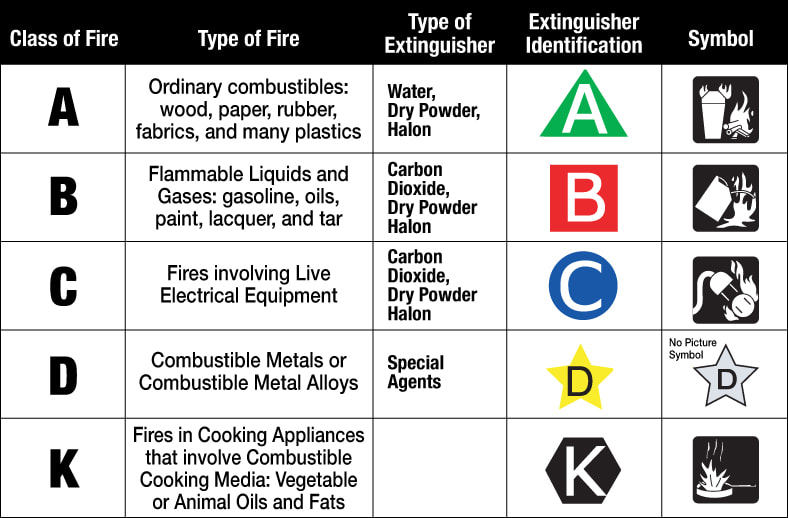
Fire Safety Mr Ferguson S Class Site

Classes Of Fire An In Depth Look At Fire Prevention

Find Out What The Symbols On Your Fire Extinguisher Actually Mean Foremost Promotions

Fire Extinguisher Types And Uses A Fire Extinguisher Guide Youtube

Classification Of Fire And Hazard Types As Per Nfpa Enggcyclopedia
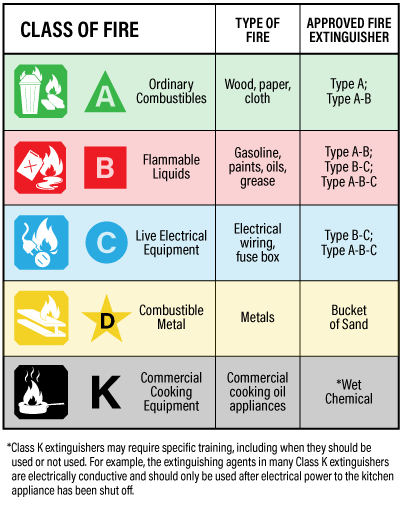
Fire Extinguishers Portable Osh Answers

Fire Safety Airswift Safety Moment

Abcs Of Fire Extinguishers Fire Prevention Services The University Of Texas At Austin
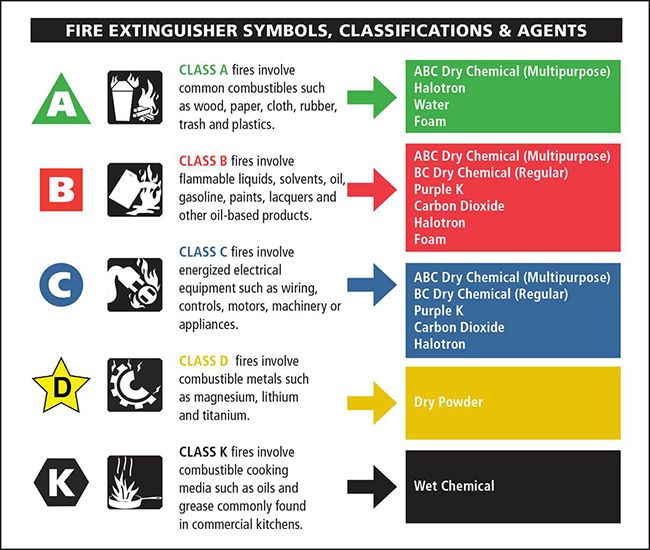
Types Of Fires Kidde Fire Safety
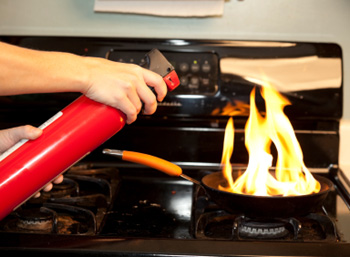
Kitchen Class K Fires How To Fight Them

Find Out What The Symbols On Your Fire Extinguisher Actually Mean Foremost Promotions
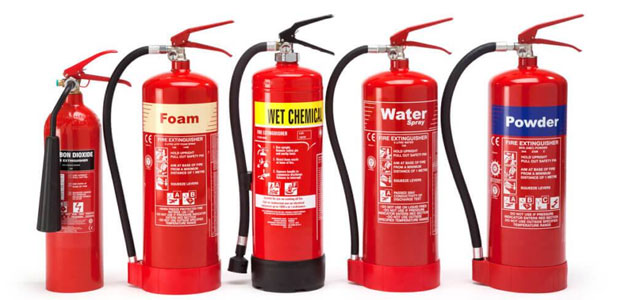
The Abcs Ds And Ks Of Fire Extinguishers Occupational Health Safety

Portable Fire Extinguishers Fire Extinguisher Uses Fire Equipment

Why Restaurants Need Class K Fire Extinguishers Gdi Insurance Agency Inc


